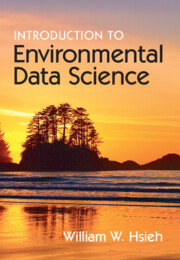Book contents
- Frontmatter
- Contents
- Preface
- Notation Used
- Abbreviations
- 1 Introduction
- 2 Basics
- 3 Probability Distributions
- 4 Statistical Inference
- 5 Linear Regression
- 6 Neural Networks
- 7 Non-linear Optimization
- 8 Learning and Generalization
- 9 Principal Components and Canonical Correlation
- 10 Unsupervised Learning
- 11 Time Series
- 12 Classification
- 13 Kernel Methods
- 14 Decision Trees, Random Forests and Boosting
- 15 Deep Learning
- 16 Forecast Verification and Post-processing
- 17 Merging of Machine Learning and Physics
- Appendices
- References
- Index
7 - Non-linear Optimization
Published online by Cambridge University Press: 23 March 2023
- Frontmatter
- Contents
- Preface
- Notation Used
- Abbreviations
- 1 Introduction
- 2 Basics
- 3 Probability Distributions
- 4 Statistical Inference
- 5 Linear Regression
- 6 Neural Networks
- 7 Non-linear Optimization
- 8 Learning and Generalization
- 9 Principal Components and Canonical Correlation
- 10 Unsupervised Learning
- 11 Time Series
- 12 Classification
- 13 Kernel Methods
- 14 Decision Trees, Random Forests and Boosting
- 15 Deep Learning
- 16 Forecast Verification and Post-processing
- 17 Merging of Machine Learning and Physics
- Appendices
- References
- Index
Summary
Many machine learning methods require non-linear optimization, performed by the backward propagation of model errors, with the process complicated by the presence of multiple minima and saddle points. Numerous gradient descent algorithms are available for optimization, including stochastic gradient descent, conjugate gradient, quasi-Newton and non-linear least squares such as Levenberg-Marquardt. In contrast to deterministic optimization, stochastic optimization methods repeatedly introduce randomness during the search process to avoid getting trapped in a local minimum. Evolutionary algorithms, borrowing concepts from evolution to solve optimization problems, include genetic algorithm and differential evolution.
Keywords
Information
- Type
- Chapter
- Information
- Introduction to Environmental Data Science , pp. 216 - 244Publisher: Cambridge University PressPrint publication year: 2023
Accessibility standard: Unknown
Why this information is here
This section outlines the accessibility features of this content - including support for screen readers, full keyboard navigation and high-contrast display options. This may not be relevant for you.Accessibility Information
- 1
- Cited by
